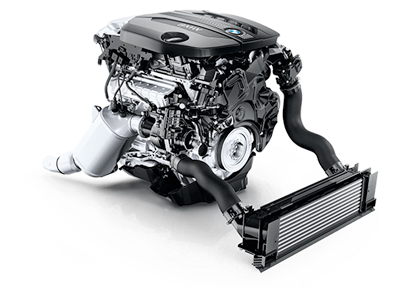The Role of BMW Engine Design in Achieving Exceptional Fuel Efficiency
Wiki Article
From Principle to Fact: A Comprehensive Evaluation of the Engineering Marvels Driving Automotive Powertrain Developments
In the realm of automotive design, the detailed web of improvements driving powertrain evolution is an engaging story that unfolds with precision and innovation. From the concept of cutting-edge innovations to their understanding in tangible automobile powertrains, a trip packed with design wonders awaits exploration. As we navigate with the worlds of interior combustion engines, electric propulsion systems, crossbreed powertrains, and the integration of software program and connectivity, a tapestry of advancements arises. Nevertheless, truth intrigue hinges on the unraveling future fads in automobile propulsion, where the borders of what is considered possible proceed to be pushed.Evolution of Internal Combustion Engines
The development of interior combustion engines has been a critical facet in the improvement of automotive powertrains. From the early layouts of the late 19th century to the sophisticated engines these days, the journey of inner combustion engines has been noted by constant development and refinement. The basic principle of these engines continues to be the controlled burning of gas within a confined room to produce mechanical power. For many years, improvements in materials, making techniques, and digital controls have dramatically improved the performance, performance, and ecological kindness of interior burning engines.
One of the crucial landmarks in this evolution was the growth of fuel shot systems, which replaced carburetors and made it possible for extra precise control over the fuel-air mix. Looking ahead, continuous research study and development initiatives are focused on alternative gas, hybridization, and electrification to move the evolution of internal burning engines in the direction of also higher effectiveness and sustainability.
Rise of Electric Propulsion Equipments
In the world of vehicle engineering, a significant shift towards electric propulsion systems is presently improving the landscape of lorry powertrains. bmw engine. Electric propulsion systems, mostly driven by improvements in battery innovation and environmental problems, are coming to be progressively prevalent in the automobile market. These systems offer countless benefits over standard internal burning engines, including higher performance, decreased emissions, and improved performance capacities
As car manufacturers remain to invest in research and development, electrical propulsion systems are expected to end up being much more widespread and sophisticated. The shift in the direction of electrification represents a zero hour in auto history, signifying a considerable separation from conventional burning engine technology in the direction of a more sustainable and reliable future.

Innovations in Crossbreed Powertrains
With the growing demand for even more fuel-efficient and ecologically friendly lorries, innovations in crossbreed powertrains have come to be a centerpiece in the automobile industry's quest of sustainable transport services. Crossbreed these details powertrains integrate traditional interior combustion engines with electrical propulsion systems, offering boosted fuel efficiency and decreased exhausts compared to traditional lorries.One trick advancement in crossbreed powertrains is the advancement of plug-in hybrid electrical cars (PHEVs) These lorries can be billed from an external source of power, permitting expanded electric-only driving varieties. In addition, developments in regenerative stopping systems have actually enhanced the effectiveness of hybrid automobiles by transforming kinetic energy during braking right into electric power to why not try here recharge the battery.
Moreover, car manufacturers are increasingly concentrating on maximizing the integration of hybrid powertrains with advanced transmission systems to better boost general efficiency and efficiency. Making use of lightweight materials and progressed control systems has also added to making hybrid powertrains more effective and small. On the whole, the continual advancements in hybrid powertrains are leading the way for a more sustainable future in the automotive industry.

Integration of Software Application and Connection
Advancing the automobile industry's technical landscape, the combination of software application and connectivity plays a pivotal duty in improving car efficiency and customer experience. Software application controls critical facets of the car, such as engine management, transmission systems, and progressed driver-assistance systems (ADAS)Connectivity further boosts this integration by permitting automobiles to communicate with external networks, various other cars, and framework. With features like over-the-air updates and remote diagnostics, suppliers can constantly improve automobile performance, address concerns promptly, and present new attributes without calling for physical recalls. Furthermore, connectivity makes it possible for sophisticated functionalities like real-time website traffic updates, remote automobile monitoring, and smooth integration with smart phones for improved ease.
Future Patterns in Automotive Propulsion
The evolution of automotive powertrain innovations, particularly in the integration of software application and connectivity, sets a foundation for checking out the future patterns in automobile propulsion. Looking ahead, essential patterns are emerging that are poised to revolutionize the automotive industry.These automobiles check this site out may require distinct powertrain configurations to sustain different degrees of freedom. Furthermore, the assimilation of fabricated knowledge (AI) and machine learning in lorry propulsion systems is prepared for to improve efficiency and efficiency.
Conclusion
In verdict, the continuous evolution of vehicle powertrains has seen the growth of inner combustion engines, electrical propulsion systems, hybrid powertrains, and the assimilation of software application and connectivity. These improvements have driven considerable improvements in effectiveness, performance, and sustainability in the vehicle industry. Looking ahead, future fads suggest a continued shift in the direction of electrification, self-governing driving, and connection, shaping the future of auto propulsion systems.The development of inner combustion engines has actually been a pivotal element in the advancement of vehicle powertrains.In the world of automobile design, a significant shift in the direction of electrical propulsion systems is presently reshaping the landscape of lorry powertrains. In general, the continuous innovations in hybrid powertrains are leading the way for an extra lasting future in the automotive market.
The advancement of automotive powertrain developments, specifically in the integration of software application and connection, establishes a foundation for checking out the future fads in automotive propulsion.In conclusion, the continuous development of vehicle powertrains has seen the advancement of inner burning engines, electrical propulsion systems, crossbreed powertrains, and the assimilation of software program and connection.
Report this wiki page